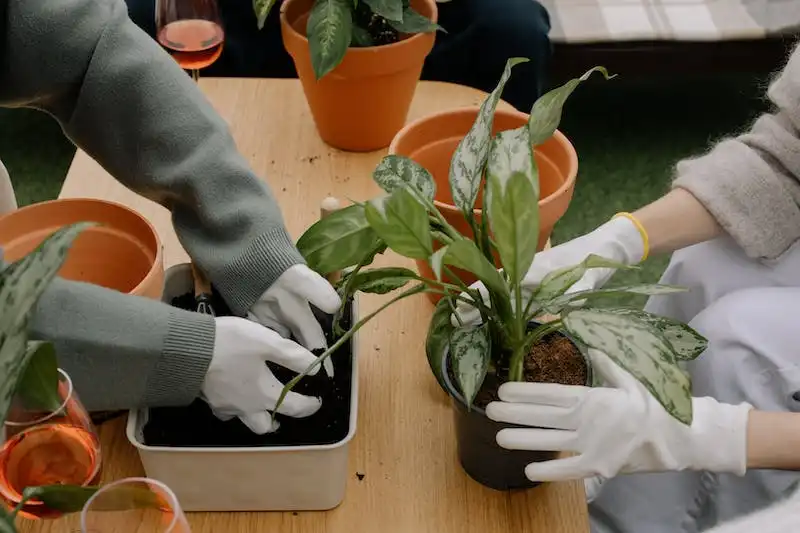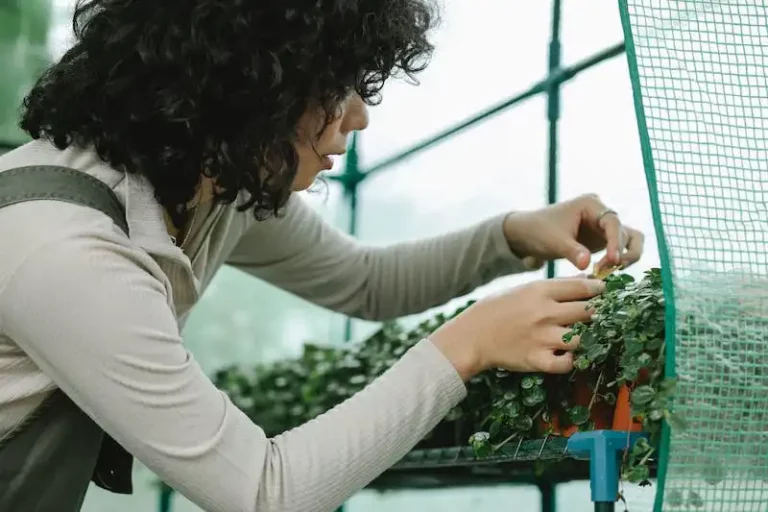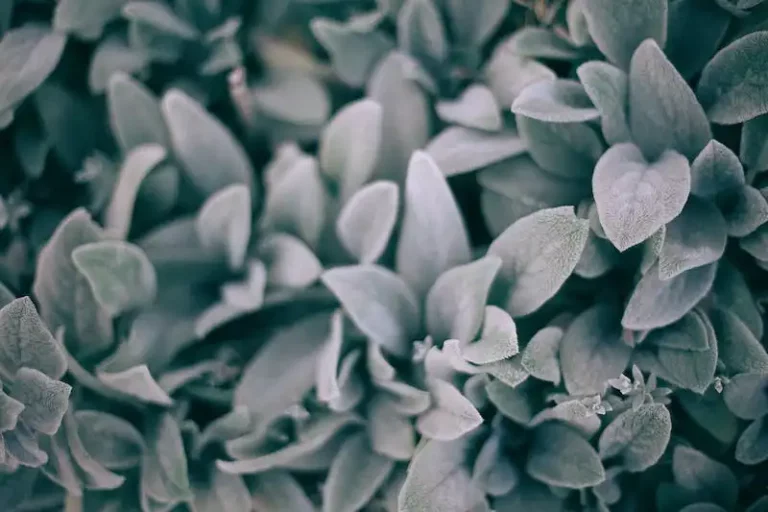The Lacy Leaf Philodendron, also known as Philodendron hastatum, is a popular houseplant that is loved for its stunning foliage. This plant has large, broad leaves that are deeply lobed and have a lacy appearance, giving it a unique and attractive look. The Lacy Leaf Philodendron is a relatively low-maintenance plant, making it a great option for both beginner and experienced plant parents.
To keep your Lacy Leaf Philodendron happy and healthy, it’s important to provide it with the right conditions. This plant thrives in bright, indirect light, so place it near a window where it can receive plenty of filtered sunlight. Avoid placing it in direct sunlight, as this can cause the leaves to burn. The Lacy Leaf Philodendron prefers warmer temperatures between 68-86°F (20-30°C), so keep it away from drafty areas.
When it comes to watering, the Lacy Leaf Philodendron prefers a balanced approach. Water the plant thoroughly when the top inch of soil feels dry to the touch, and make sure that excess water drains out of the pot. However, be cautious not to overwater your plant, as this can lead to root rot and other issues. It’s always better to underwater than to overwater, as this plant is more tolerant of dry conditions than wet ones.
As your Lacy Leaf Philodendron grows, you may need to repot it to provide it with more space. If the roots are starting to come out of the drainage holes or the plant is becoming top-heavy, it’s a sign that it needs a larger pot. Repotting should be done in the spring, and you can also divide a mature plant into smaller sections to create new plants. When repotting, use a well-draining soil mix and a pot with drainage holes to prevent waterlogged roots.
Pruning is another important aspect of Lacy Leaf Philodendron care. Regularly pruning your plant not only helps to maintain its shape and size, but it also promotes healthier growth. Trim away any yellow or dead leaves, as well as any leggy or overgrown stems. You can also cut back long runners to encourage bushier growth. Always use clean, sharp pruners to avoid spreading diseases.
One of the common questions that philodendron enthusiasts often ask is when and how their plants will flower. While the Lacy Leaf Philodendron does produce flowers, they are not its main attraction. The flowers, known as a spathe, can be white or green and are tucked between the leaf axils. If you do get a flowering Lacy Leaf Philodendron, enjoy it as a bonus, but don’t expect it to happen consistently or often.
In summary, the Lacy Leaf Philodendron is a beautiful and low-maintenance plant that can thrive in indoor conditions. To meet its care requirements, provide it with bright, indirect light, moderate watering, and warm temperatures. Remember to repot it when necessary, prune it to maintain its shape, and don’t expect frequent flowering. With the right care, your Lacy Leaf Philodendron will continue to grow and bring beauty to your space for years to come.
Philodendron Selloum ‘Tree Philodendron’ Care Guide 2024
The Philodendron Selloum, also known as the ‘Tree Philodendron,’ is a common and popular plant that can eventually grow to impressive heights. With broadleaf foliage and a lacy appearance, this shrub-like plant adds a touch of the jungle to any indoor space.
When it comes to care, the Philodendron Selloum is relatively low-maintenance. It prefers bright, indirect sunlight, but can tolerate lower light conditions. If the plant starts getting drooping or yellow leaves, it may be an indication that it needs more light. If possible, place it near a window or where it can receive filtered sunlight.
Watering is another crucial aspect of Philodendron Selloum care. Make sure to water the plant thoroughly, allowing the soil to dry out slightly between waterings. It’s essential to avoid overwatering, as this can lead to root rot. In summer, the plant may require more frequent watering, while in winter, you can reduce the frequency to every 2-3 weeks.
Repotting should be done every 1-2 years, or when the plant outgrows its current pot. Use a well-drained soil mix and choose a pot that is slightly larger than the current one. After repotting, water the plant immediately and place it in a location with bright, indirect light.
To keep your Philodendron Selloum healthy and pest-free, wipe the leaves regularly to remove dust. This will help the plant to breathe better and prevent pest infestations. If pests are an issue, an occasional spray of insecticidal soap or neem oil is suggested. Common pests that might affect the Philodendron Selloum include aphids, mealybugs, and spider mites.
If you’re looking to give your Philodendron Selloum a more upright and tree-like look, you can use a stake to support it. Gently tie the stems to the stake, making sure not to damage the foliage. This will help the plant grow taller and create a stunning focal point in any room.
In terms of fertilizer, a balanced, water-soluble fertilizer can be applied monthly during the spring and summer months. Follow the instructions provided on the fertilizer package for the correct dosage. Avoid fertilizing in winter when the plant is not actively growing.
Philodendron Selloum is generally considered to be a low-toxicity plant, but it may cause irritation if ingested. Keep it out of reach of children and pets to prevent any accidents. If you have any concerns about the plant’s toxicity, consult a medical professional or poison control center for more information.
In conclusion, the Philodendron Selloum, or ‘Tree Philodendron,’ is a beautiful and easy-to-care-for plant that can add a touch of the jungle to any indoor space. With its impressive foliage and graceful appearance, it’s no wonder this plant is a favorite among plant enthusiasts. Follow the care guide provided above to keep your Philodendron Selloum healthy and thriving for years to come.
FAQ:
- How often should I water my Philodendron Selloum?
- When should I repot my Philodendron Selloum?
- What’s the best light conditions for my Philodendron Selloum?
- Is Philodendron Selloum toxic to pets?
- How high can a Philodendron Selloum grow?
For answers to these frequently asked questions and more, continue reading below.
What’s Unique About Philodendron selloum
Philodendron selloum, also known as bipinnatifidum, is a unique and visually appealing plant that is native to South America. Its size and height are impressive, with leaves that can grow up to three feet long and a plant that can reach heights of six feet or more.
One of the most distinctive features of Philodendron selloum is its deeply lobed leaves, which give it a tropical and jungle-like appearance. These leaves are glossy and green, with a unique texture that adds to the plant’s visual appeal. The plant’s upright form and large size make it a striking addition to gardens or indoor spaces.
Philodendron selloum is a relatively low-maintenance plant, making it a popular choice for both beginner and experienced gardeners. It can tolerate a wide range of light conditions, from bright indirect light to partial shade, making it versatile for different environments.
When it comes to watering, Philodendron selloum needs to be consistently watered but not overwatered. The plant prefers moist soil, so it is important to water it when the top inch of soil feels dry. However, it is crucial not to let the plant sit in standing water, as this can lead to root rot.
Repotting Philodendron selloum is suggested only when the plant becomes root-bound, which is indicated by roots protruding from the drainage holes at the bottom of the pot. When repotting, it is important to use a well-draining soil mix and a pot that is slightly bigger than the current one to allow for growth.
Philodendron selloum is generally a disease-resistant plant, but it can be susceptible to pests such as aphids and spider mites. To prevent infestation, it is recommended to regularly inspect the plant for signs of pests and wipe down the leaves with a damp cloth. For more severe infestations, an insecticidal soap or a neem oil spray can be used.
It is worth noting that Philodendron selloum is toxic to pets and humans if ingested, so it is important to place the plant out of reach of curious children and pets. If any part of the plant is accidentally ingested, it is advised to seek medical attention immediately and wash the affected skin area.
In conclusion, Philodendron selloum is a unique and visually stunning plant that can add a touch of tropical beauty to any space. Its large size and impressive height make it a standout plant in gardens or indoor areas, and its low-maintenance nature makes it a hassle-free option for plant enthusiasts. With proper care and attention, this philodendron can thrive and become a focal point in any setting.
Philodendron selloum Care
Philodendron selloum, also known as the tree philodendron, is an impressive houseplant that is fairly easy to care for. Here are some tips on how to keep your Philodendron selloum healthy and thriving:
- Light: Philodendron selloum prefers bright, indirect light. Avoid direct sunlight, as it can scorch the leaves. Place your plant in a location with filtered sunlight or in a bright room.
- Watering: Keep the soil consistently moist, but not soggy. Allow the top inch of soil to dry out before watering again. Water thoroughly, making sure excess water can drain from the bottom of the pot.
- Temperature: Philodendron selloum prefers temperatures between 65-80°F (18-27°C). Avoid placing the plant in areas with cold drafts or temperatures below 55°F (13°C).
- Humidity: This plant enjoys high humidity levels. Mist the leaves regularly or place the pot on a tray filled with pebbles and water to increase humidity around the plant.
- Fertilizing: Feed your Philodendron selloum with a balanced, water-soluble fertilizer every month during the growing season (spring and summer). Follow the instructions on the fertilizer package for proper dilution and application.
- Repotting: Philodendron selloum is a relatively slow-growing plant and will only need to be repotted every 2-3 years. Choose a pot that is 1-2 inches wider than the current one, and use a well-draining potting mix.
- Propagation: This plant can be propagated through stem cuttings. Cut a stem just below a node and place it in a glass of water or directly into moist potting soil. Keep the cutting in a warm, sunny spot and mist it regularly. Roots should start to develop in a few weeks.
- Pets: Philodendron selloum is toxic to cats and dogs if ingested. Keep your pets away from the plant or choose pet-friendly alternatives.
With these care instructions, you can enjoy the beautiful appearance of Philodendron selloum in your home. Its large, glossy foliage and upright growth habit make it a stunning addition to any indoor space.




